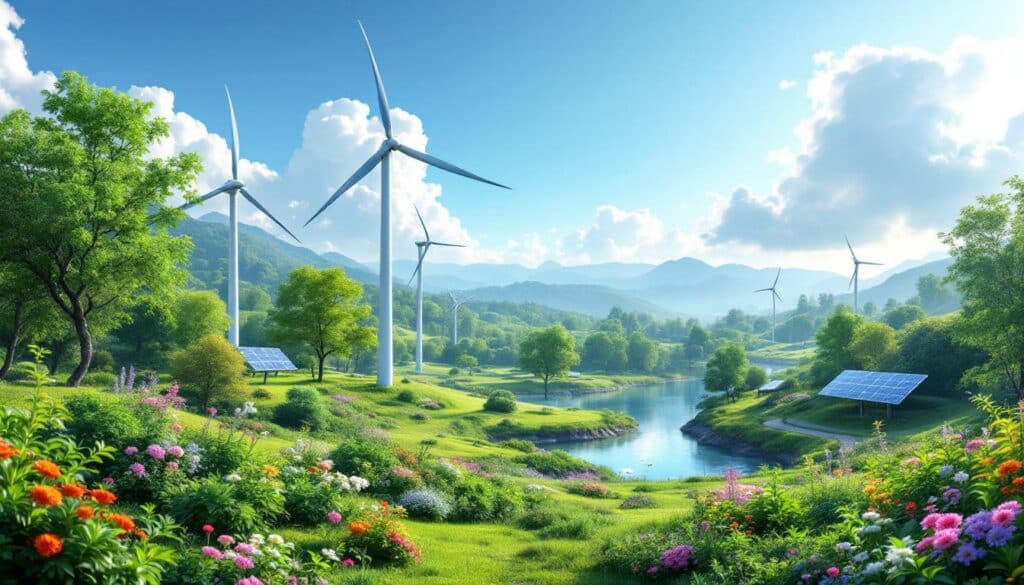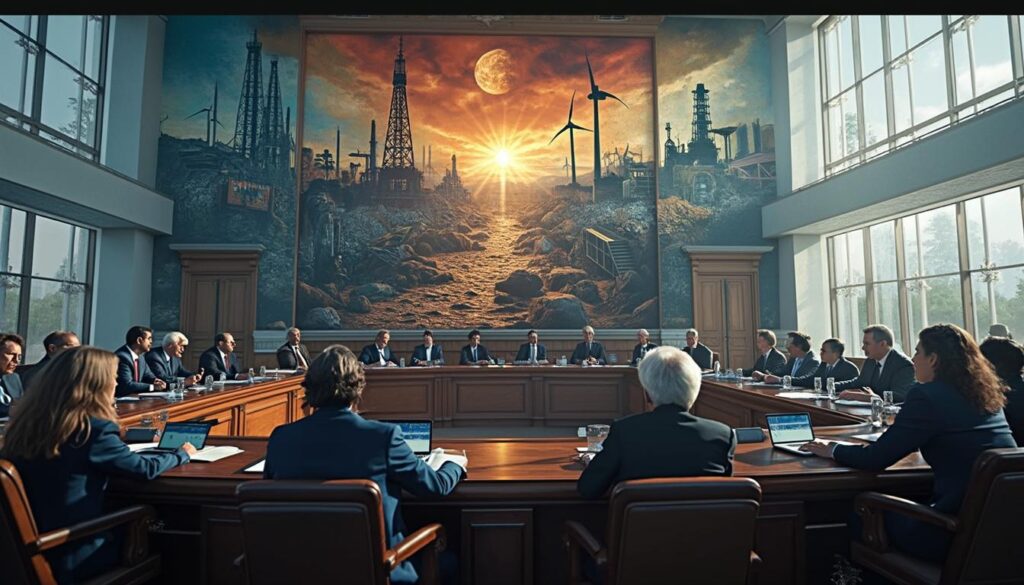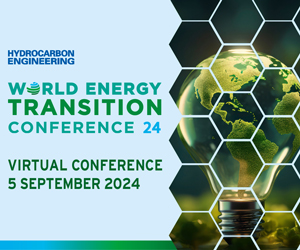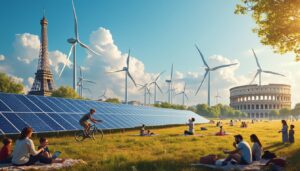The new Greenlink interconnector between National Grid and EirGrid is now operational. With a capacity of 504MW, this link strengthens the electrical connection between the United Kingdom and Ireland. Comprised of two high-voltage direct current submarine cables and associated conversion stations, Greenlink represents a major advance in the renewable energy sector.
This infrastructure enhances the energy security and resilience of the networks of both countries. It also facilitates the sharing of surplus clean energy production, optimizing the use of renewable resources. Technical innovations, such as the use of more environmentally friendly insulating gases, demonstrate the commitment to a more sustainable future.

“`html
The commissioning of Greenlink, the new interconnector between National Grid in the UK and EirGrid in Ireland, represents a major advance in the field of renewable energies. With a transfer capacity of 504MW, this innovative project facilitates the sharing of energy between the two countries, thereby strengthening energy security and the resilience of electrical networks.
How does the Greenlink interconnector work?
Greenlink is a 320kV interconnector made up of two high-voltage direct current (HVDC) submarine cables and associated conversion stations. These cables extend for 200 km, of which 160 km are under the Irish Sea, thus connecting the networks of National Grid and EirGrid on either side of the Irish Channel. The conversion stations located at both ends of the cable convert direct current (DC) into alternating current (AC), allowing the energy transferred to be integrated into the national grids.
This infrastructure not only allows for the transfer of energy but also enables efficient management of renewable production surpluses. For example, in the case of high wind energy production in the UK, the surplus energy can be exported to Ireland, thereby optimizing the use of available renewable resources.
What are the benefits of Greenlink for both countries?
The Greenlink interconnector offers numerous benefits for both the United Kingdom and Ireland. Firstly, it enhances energy security by allowing for diversification of energy sources and ensuring redundancy in case of a failure in part of the network. Furthermore, Greenlink strengthens the resilience of electrical networks by facilitating the balance of supply and demand between the two countries.
In addition, this project significantly contributes to the energy transition by promoting the integration of renewable energies. By sharing the surpluses of wind energy, both nations can increase their capacity to harness clean resources, thus reducing their dependence on fossil fuels. This strengthening of green production capacity aligns with the ambitious carbon emission reduction targets set for 2030.
What challenges were faced during the implementation of Greenlink?
The realization of Greenlink required the implementation of innovative technical solutions and close collaboration between several stakeholders. One of the main achievements was the improvement of National Grid’s Pembroke substation. By installing a new gas-insulated switchgear bay within the existing substation, National Grid was able to integrate the interconnector in a cost-effective and space-optimized manner. This hybrid approach also reduces the use of sulphur hexafluoride (SF6), aligning the project with the goals of reducing greenhouse gas emissions.
On the Irish side, the interconnector is connected to the Great Island substation in County Wexford. This connection was facilitated by modernization works aimed at making the Irish grid ready for the integration of renewable energies. The conversion stations located at each end play a crucial role in the efficient management of energy flow between the two networks.
What impact does Greenlink have on the energy transition?
Greenlink plays a key role in accelerating the energy transition by offering an infrastructure that allows for better integration of renewable energies into electrical grids. By facilitating the transfer of clean energy between the United Kingdom and Ireland, Greenlink contributes to the reduction of carbon emissions and the promotion of green technologies. To learn more about the integration of renewable energies and how to accelerate your company’s energy transition, check out this article.
Moreover, this interconnection allows for better management of fluctuations in renewable energy production, thus reducing the risk of disruptions on the grid. A recent report revealed that the promises of renewable energies could, without adequate infrastructure, plunge New York’s electrical grid into chaos. Greenlink illustrates the importance of such interconnections for maintaining the stability and reliability of modern electrical networks. For more details, you can read this report.
What are the technological aspects of Greenlink?
The success of Greenlink relies on cutting-edge technology and advanced engineering. The HVDC cables used facilitate efficient energy transfer over long submarine distances, minimizing electrical losses. The conversion stations equipped with the latest technologies ensure rapid and reliable current conversion, guaranteeing seamless integration into the respective networks.
Additionally, the use of an alternative and eco-friendly insulating gas in the switchgear of the Pembroke substation demonstrates National Grid’s commitment to sustainable solutions. This approach significantly reduces the project’s carbon footprint, contributing to the overall goal of reducing SF6 emissions by 50% by 2030. For a deeper understanding of the interactions between technology and the environment, this resource can be consulted.
What feedback have the stakeholders provided?
The leaders of the companies involved in the Greenlink project expressed their enthusiasm regarding the benefits and implications of this interconnection. James O’Reilly, CEO of Greenlink Interconnector Limited, stated:
“The successful realization of Greenlink marks a significant milestone as one of the first energy projects developed and financed by the private sector between the United Kingdom and Ireland. This achievement reflects the technical expertise and collaboration of the Greenlink team and our trusted partners, Siemens Energy and Sumitomo Electric.”
John Twomey, director of customer connections at National Grid, added:
“In response to the evolving demands on our electrical networks, interconnections offer immense value by strengthening the security of electricity supplies and enhancing our collective ability to harness renewable energy produced across borders.”
Michael Kelly, acting head of operations and asset management at EirGrid, emphasized:
“EirGrid is leading the transition to a low-carbon future by making the Irish grid ready for renewable energies, and this connection represents a crucial step in that journey.”
These statements highlight the importance of collaboration and innovation in the realization of ambitious energy projects. The Greenlink interconnection is an inspiring example of what public and private partnerships can achieve for a sustainable energy future.
What is the future of energy interconnections?
The commissioning of Greenlink paves the way for future energy interconnections between different countries, thereby strengthening the integration of energy markets and the security of supplies. These projects are essential for achieving global climate goals and for ensuring a smooth and effective energy transition.
Furthermore, technological advancements and ongoing innovations in the field of renewable energies and energy transfer infrastructures will help overcome current and future challenges. The integration of smart interconnections, using artificial intelligence and smart grids, could further improve the efficiency and reliability of energy systems. For those interested in technological developments in this sector, this article offers an interesting perspective.
Additionally, public and private initiatives will continue to play a crucial role in financing and deploying new energy infrastructures. Influential figures like Bill Gates, a pioneer in green technologies, inspire and support these efforts through their commitment and investments. To learn more about his journey, <
a href=”https://www.greenjustnow.comla-biographie-de-bill-gates-pionnier-de-la-tech-et-des-energies-vertes/”>check out this biography.
In summary, the Greenlink interconnection is a cornerstone of the energy transition, demonstrating how international cooperation and technological innovations can together create a greener and more resilient future.
Articles similaires
Thank you!
We will contact you soon.














